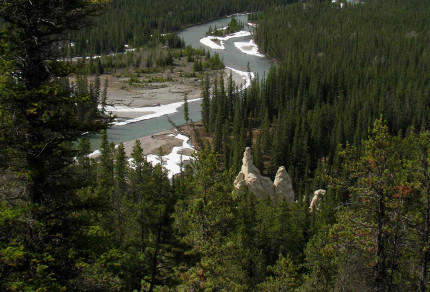
Bow River, Banff National Park, Alberta (© Magi Nams)
At 0800 I walked beneath clear skies from the Banff Centre to the Bow River Hoodoos Trail, the 3°C air nipping at my gloved hands. Tall, straight pines edged the trail, and I thought how different the open western Canadian montane forest was from the eucalypt woodlands of the Australian savannahs, with their kinked and crooked-limbed gum trees. Still now, five months after Vilis’s and my return from a year based in Townsville, Queensland, I envision Australian vegetation, landforms, and wildlife.
The trail led first through riverbottom forest and then traced a rocky escarpment overlooking the snow-edged Bow River. When the rising sun cleared the mountain peaks and cast golden warmth onto the scene, birdsong spilled out over the forest. I spotted a male Wilson’s warbler, with his olive and gold plumage and clean black cap, as well as my first Townsend’s warbler and yellow-throated ‘Audubon’ colour phase of yellow-rumped warbler. A male brown-headed cowbird performed a courtship display to his mate, his wings spread and beak pointed to the sky. I discovered that a harsh, rasping call belonged to a Clark’s nutcracker and observed the jay-sized grey-and-black corvid harvesting seeds from the cones of a Douglas fir.
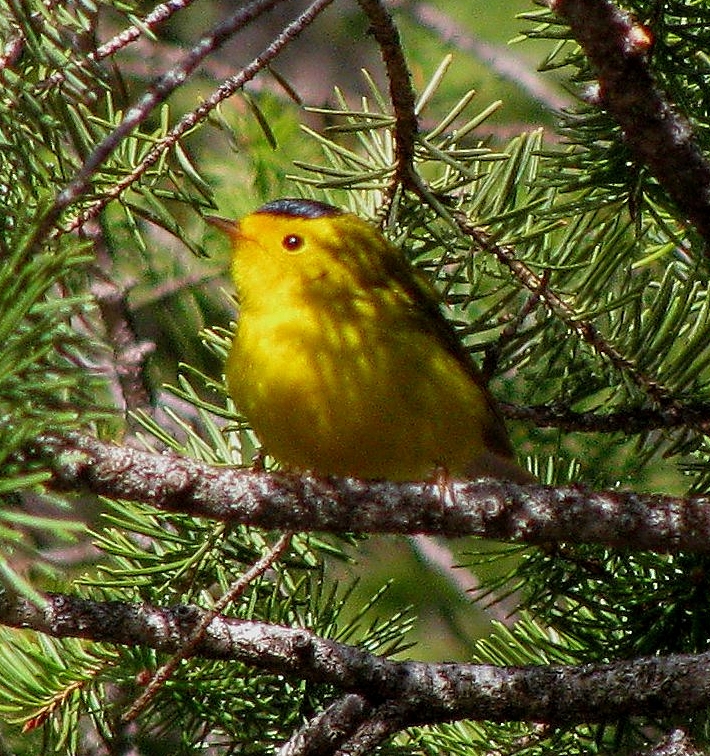
Male Wilson’s Warbler (© Magi Nams)
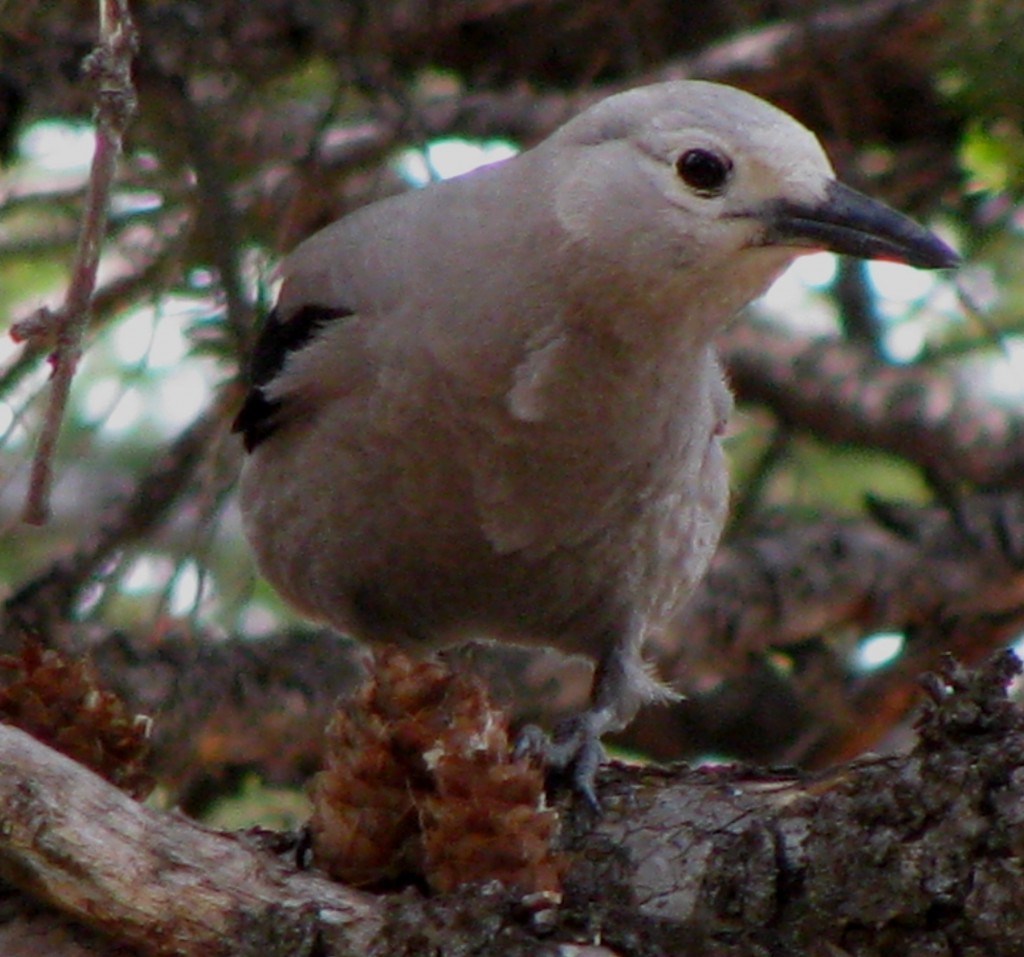
Clark’s Nutcracker (© Magi Nams)
Farther along the 4-kilometre trail to the hoodoos lookout, Columbian ground squirrels whistled territorial claims from near the safety of their burrows dug into dry, open slopes. Red squirrels scampered over the forest floor and raced up trees. Near the lookout, Townsend’s solitaires fed on juniper berries, and I spotted several males singing their melodious songs from atop tall trees.

Columbian Ground Squirrel (© Magi Nams)
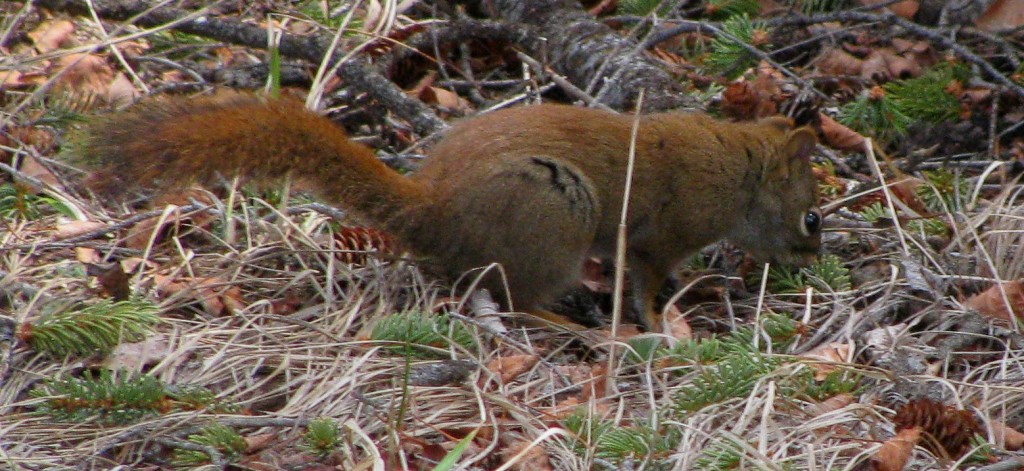
Red Squirrel (© Magi Nams)
The lookout offered stunning views of the hoodoos – jutting fingers of eroding rock protruding from the forest – against a backdrop of snow-laced river and thrusting peaks. In every direction, mountains towered against the skyline.
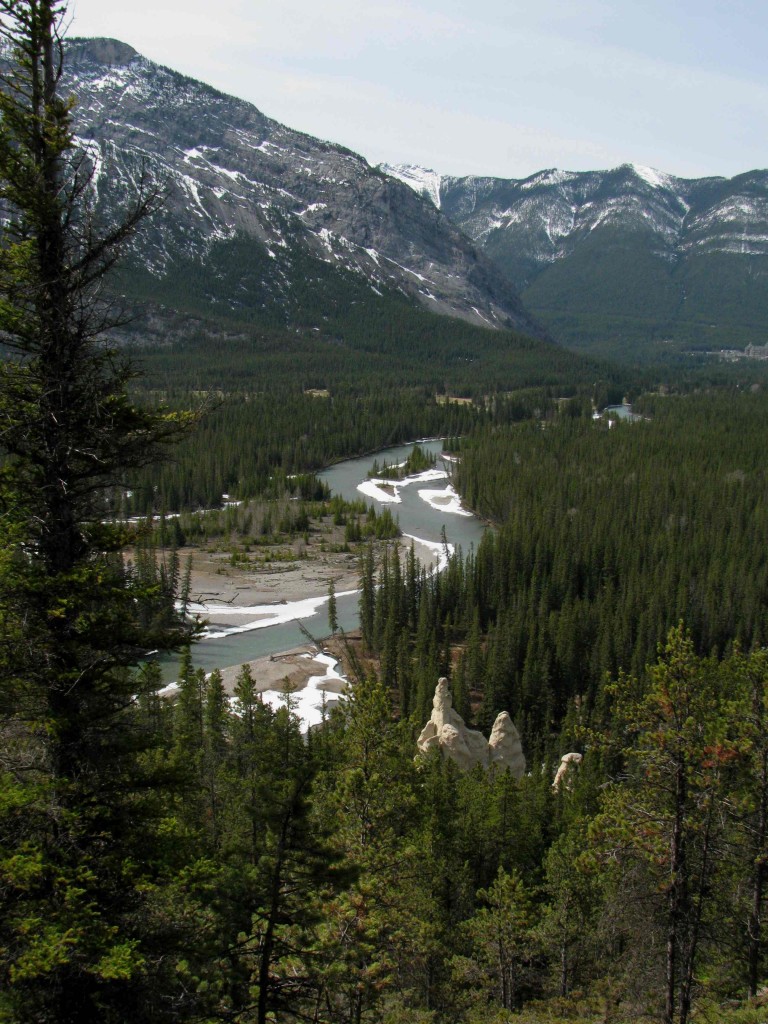
Bow River and Hoodoos (© Magi Nams)

Rocky Mountain Scenery viewed from Bow River Hoodoos Trail, Banff National Park (© Magi Nams)
I retraced my steps, met Vilis at the Banff Centre, and during the evening, attended an intriguingly-titled seminar – “Bats are like grizzly bears with wings” – presented by Dr. Robert Barclay of the University of Calgary. From Dr. Barclay, I learned that Canada is home home to nineteen species of bats, all of which are insectivores, and that the most common Canadian bat is the little brown bat, which swoops around my house in Nova Scotia during the summer months. Nine bat species reside in Alberta, six of which hibernate during the part of the year when insects aren’t available, and three of which migrate. The latter three species are the hoary, red, and silver-tailed bats.
Research done by Dr. Barclay and his students showed that migrating bats in southwestern Alberta are at a high risk of fatality in late summer and early autumn due to the presence of wind farms. Some of the bats collide with wind turbines and die as a result of trauma, but even more die from entering the zone of decompression surrounding the turbine blades, which causes the bats’ lung capillaries to bleed into their lungs and thus results in suffocation. Surprisingly, most fatalities occur when wind speeds are low, so Dr. Barclay approached the wind farm company TransAlta and explained the situation. When TransAlta turned off the turbines at low wind speeds during the bat migration period (the company didn’t generate much electricity at low turbine speeds anyway), the fatality rate of migrating bats was reduced by sixty percent – a phenomenal saving of the lives of species integral to the normal functioning of Alberta’s western ecosystems.
So, how are bats like grizzlies? Alberta’s three migrating bat species use the natural environment on a huge scale, as do grizzlies. Like grizzlies, they are long-lived (although not migratory, little brown bats have reached ages of nearly 40 years). Bats reproduce slowly, like grizzlies, and invest large amounts of energy in raising individual young. Lastly, bats, like grizzlies, are strongly affected by the manipulation of their environment by humans. Here, in this mountain resort town encircled by grizzly habitat, Dr. Barclay’s ‘bats are like grizzly bears with wings’ analogy is an effective one.
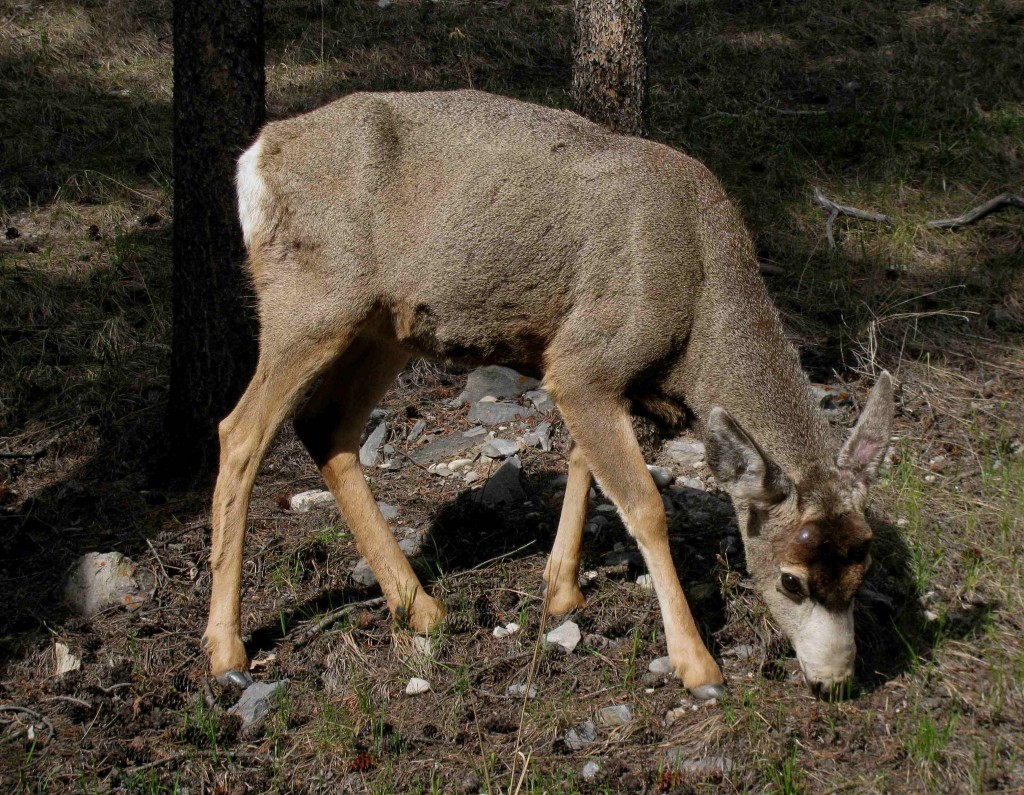
Young Bull Elk in Banff, Alberta (© Magi Nams)
Today’s fauna: northern ravens, black-billed magpies, ruby-crowned kinglets, red-breasted nuthatches, dark-eyed juncos, American robins, brown-headed cowbirds, Wilson’s warbler, *Townsend’s warblers, ‘Audubon’s’ yellow-rumped warbler, white-crowned sparrow, mountain chickadee, northern flicker, *Townsend’s solitaires, chipping sparrow, American crow, *Clark’s nutcrackers, *Columbian ground squirrels, red squirrels, elk (*lifelist sighting).
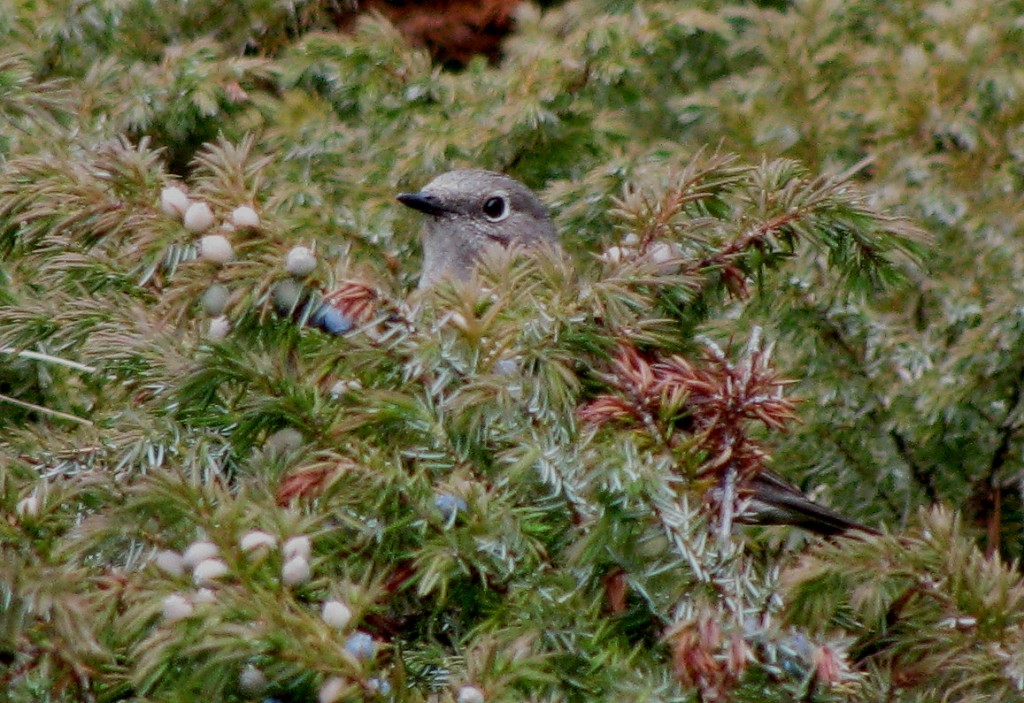
Townsend’s Solitaire Foraging in Juniper Shrub (© Magi Nams)

